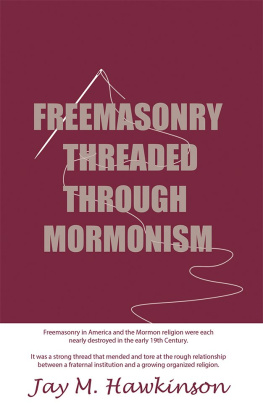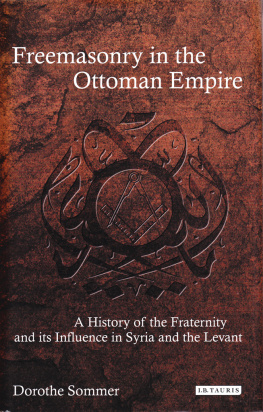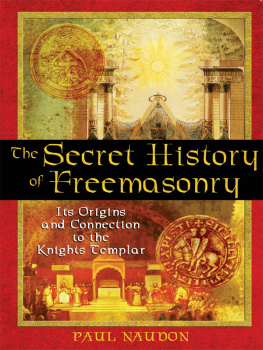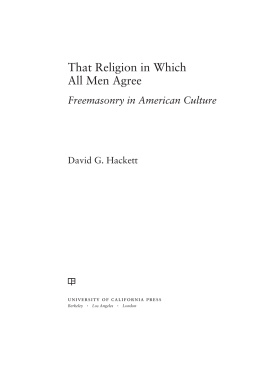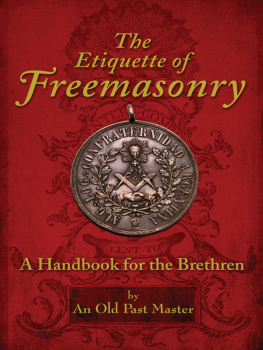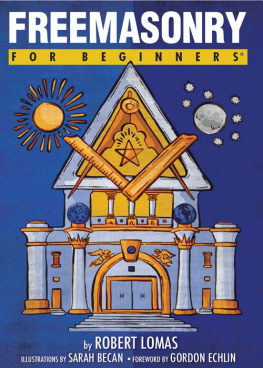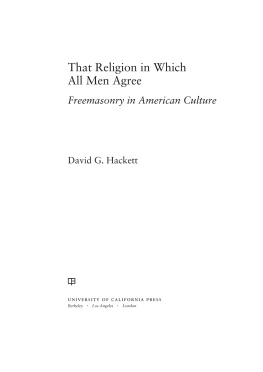FREEMASONRY THREADED THROUGH MORMONISM
Jay M. Hawkinson

FREEMASONRY THREADED THROUGH MORMONISM
Copyright 2014 Jay M. Hawkinson.
All rights reserved. No part of this book may be used or reproduced by any means, graphic, electronic, or mechanical, including photocopying, recording, taping or by any information storage retrieval system without the written permission of the author except in the case of brief quotations embodied in critical articles and reviews.
iUniverse
1663 Liberty Drive
Bloomington, IN 47403
www.iuniverse.com
1-800-Authors (1-800-288-4677)
Because of the dynamic nature of the Internet, any web addresses or links contained in this book may have changed since publication and may no longer be valid. The views expressed in this work are solely those of the author and do not necessarily reflect the views of the publisher, and the publisher hereby disclaims any responsibility for them.
Any people depicted in stock imagery provided by Thinkstock are models, and such images are being used for illustrative purposes only.
Certain stock imagery Thinkstock.
ISBN: 978-1-4917-2040-0 (sc)
ISBN: 978-1-4917-2041-7 (e)
Library of Congress Control Number: 2014903345
iUniverse rev. date: 06/26/2018
Contents
NAUVOO MASONIC LODGE...
ALL MORMON MEN BECOME MASONS
About the author: The author grew up in the Western Illinois Area known as Quad Cities U.S.A. The Quad Cities is located along the Mississippi River and it comprises five cities: Milan, Rock Island, East Moline, Moline, and Silvis on the Illinois side and two cities: Davenport and Bettendorf on the Iowa side of the river. Except for a five year tour in the U.S. Air Force and five years living and working in Rockford, Illinois, he remained in the Quad Cities area until 2010 when he relocated in Rapid City, South Dakota. Academically, he attended Black Hawk College in Moline and Augustana College in Rock Island, as well as completing a variety of courses with various other colleges and technical schools.
He has traveled to every state in the U.S. except Alaska, traveled in Europe and spent one year working in British Columbia. Of his many business activities, he owned his own small manufacturing business for over ten years during which time he received two U.S. Patents for a water recycling system.
His Masonic career began in 1950 when he was initiated into the Chalmers J. Seymour Chapter, Order of DeMolay in Moline. DeMolay was, and remains, a Masonic youth organization for young men. While growing up with DeMolay, he became the Chapter Master Councilor, or leader, and remained active in the Illinois State wide DeMolay organization. As a result of his DeMolay contributions, he was awarded the Chevalier distinction and the Legion of Honor. He was later awarded the Advisor Cross of Honor for his 14 plus years serving as the chapters Masonic advisor.
At the age of 21, the author became a Master Mason in Moline Lodge #1014. In 1968 he became a 32 o Scottish Rite Mason in the Illinois Valley of Moline. He remained very active in Masonry and served as a leader for many Masonic projects. He edited and published the Scottish Rite newsletter which received a Franklin Honorable Mention award from the Northern Masonic Jurisdiction of the Scottish Rite. Officially, through his Masonic career, he served as leader of the Lodge of Perfection for four years, functioned as Valley Secretary for two years, and served as Commander-in-Chief of the Scottish Rite Consistory for two years. He was awarded the Illinois Distinguished Service Award in 1982 and in 1986 was coroneted as an Honorary 33 rd Degree Scottish Rite Mason for the Northern Masonic Jurisdiction. In year 2007 he achieved a 50 year member status in Freemasonry.
The author takes pleasure in researching Masonic history and writing articles to publish and share. He has written and shared articles about the Cherokee Masons in the Trail of Tears and. Another article relates the less known but outstanding Masonic accomplishments made by General Douglas MacArthur.
Historically, the Masonic Order is believed to have begun during the construction of King Solomons Temple. King Solomons temple was built and dedicated to the Lord God Jehovah in the year of the world 2992, or 1012 full years before the Christian era. The temple was constructed near Jerusalem on Mt Moriah. In preparation for the actual temple construction, a neighboring King and ally, Hiram King of Tyre, willingly gathered his best artisans and sent them as an army of skilled craftsmen to build Solomons temple in Jerusalem. Among the army of craftsmen was a highly skilled work superintendent named: Hiram Abif (Abif meaning master or chief operator) to oversee all temple construction. Hiram, King of Tyre also was the suppler for timbers that were delivered from Lebanon forests and used in the construction. The rank and file of assembled builders was grouped into three artisan skill levels: helpers were known as starting apprentices, then those with advanced skills were known as fellows and those highly experienced were respected masters of their trade. Regardless of their individual skill levels, all craftsmen maintained a rigid respect for the men of each skill level, and each man normally aspired to advance to a higher skill level as an opportunity was presented. The band-of-artisans or craftsmen were collectively proud of their work but they were also jealous and extremely wary of any and all intruders, so they guarded their work with their lives. All temple craftsmen met together once daily to pray, discuss their achievements and learn new work that yet needed to be done in the temple construction. Hiram Abif remained ever watchful over the quality of all work and he only accepted the finest work. He faithfully attended to this duty by carefully inspecting all work-in-progress at noon each day.
When Solomons Temple was completed and dedicated, the close knit brotherhood of craftsmen continued through countless generations of temple and cathedral building throughout Europe. Teams of working craftsmen often chose to maintain a special unity by organizing guilds to stay together and maintain a work bond. Over time, the worker guilds became progressively structured, guarded and secret during succeeding generations. All guild members progressively became further refined in dedicating moral support to their brother craftsmen, they developed greater strength in individual character, and assisted with a brothers family when a brothers family was in need. Then In 1717 came a Masonic Awakening in England. It was then that Masonry formally transitioned from being specifically connected with various craftsmen guilds and became totally adapted in developing the individual character in selected men as had been done among the craftsman. This new attitude then became available to all respectable adult men and evolved into Freemasonry as we know it today. Most important, Freemasonry included religious practices taken from its early beginning but it was never established as a religion except that to be a member demanded that the candidate and member personally believe in only one supreme-being. The supreme-being was best known by each man as the G rand Architect of the Universe identified as either: Jehovah, Allah, Buda, Krishna, etc. In addition, each member was obligated to attend his own church and to honor his own personal religious beliefs according to his god. Freemasonry thereafter remained a secret order among men. It became known as a World Wide Brotherhood of Masons with each member pledging to work and aid his brother and protect all Masonic secrets with his life. By his sworn pledge each Freemason would be subject to penalties of death should the Orders secrets be revealed to any person or persons outside of the order.
Next page
